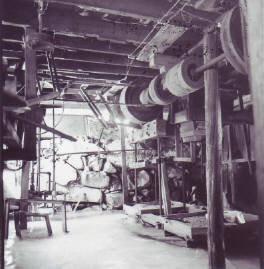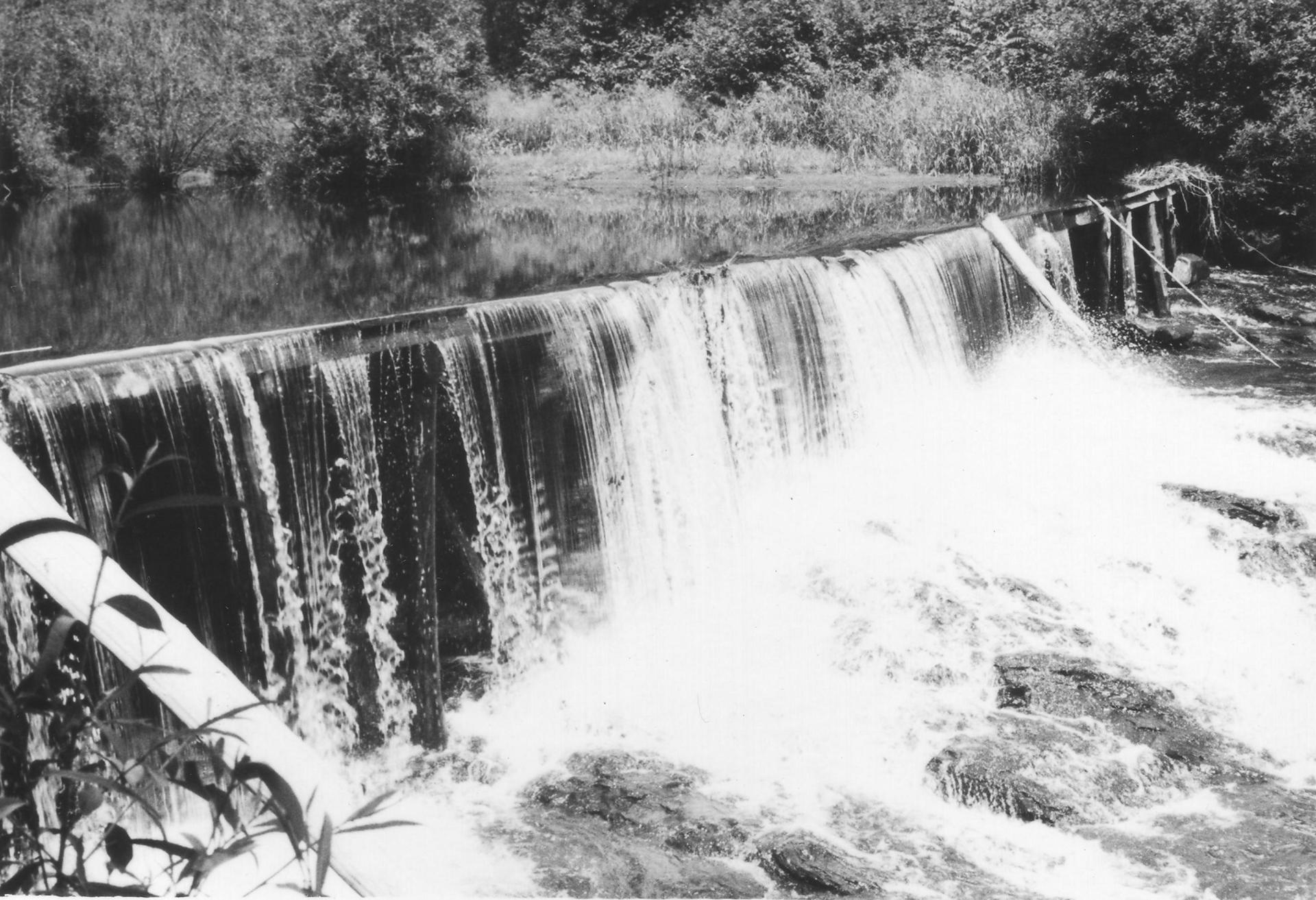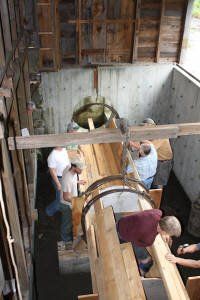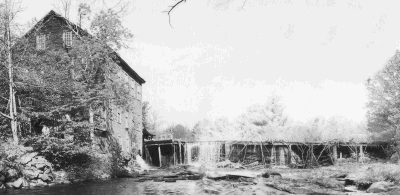Hydropower
Hydropower.
How Hydropower Works at Ben's Mill.
The primary source of operating power for the machinery in Ben's Mill is hydro-power, the hydro source being the Stevens River. The first mill on this river was built in 1782. Throughout the 1800's there were several hydro-powered mills on the Stevens River. Ben's Mill, in the present building, dates back to 1872.
At Ben's Mill, water from the mill dam is directed into a water turbine located in the mill basement. That turbine turns the mill's drive shafting, also located in the mill basement. Using an arrangement of belts and pulleys, the drive power of the turbine is directed to the mill's machinery.
In order for the stream's water to make the turbine spin, and thus make the turbine output drive shaft turn, the "height" of the water must be maintained above the turbine inlet. That "height" of water is called the hydraulic (or "driving") head, and must be high enough to meet the turbine manufacturer's specifications for proper turbine operation. The driving head overcomes the inertia/friction of the turbine and associated shafting/ loads. The level of water is established at Ben's Mill by having a timber dam behind the mill. Water is directed from this mill pond into the turbine inlet. To establish water flow through the turbine, a gate is manually opened, allowing water to enter the penstock (a wooden cylindrical waterway/tube). The penstock directs the water to the turbine inlet, and when the Machinery Operator opens the turbine inlet valve, water flows through the turbine. The force of the water against the turbine wheel blades causes the turbine output drive shaft/main line shaft to spin. Water exits the turbine discharge and flows back into the river, downstream of the dam.
This historic mill is outfitted with machinery dating back to the late 1800's. All of the machinery is designed to be belt-driven. Pulleys of varying sizes are located on the line shafts (below the main floor). These pulleys are aligned with the drive pulleys attached to the machinery on the floor above the line shafting. Using fabric belts looped around the pulleys, the rotation of the line shaft is transferred to the machinery drive shafts, causing the machinery to operate. Individual machine drive belts are engaged by Operator levers, which cause the belt to tighten around both the drive pulley and the machine pulley. The pulley diameters determine the speed at which the machines operate. They basically convert the slower line shaft speed to a higher machinery speed.






